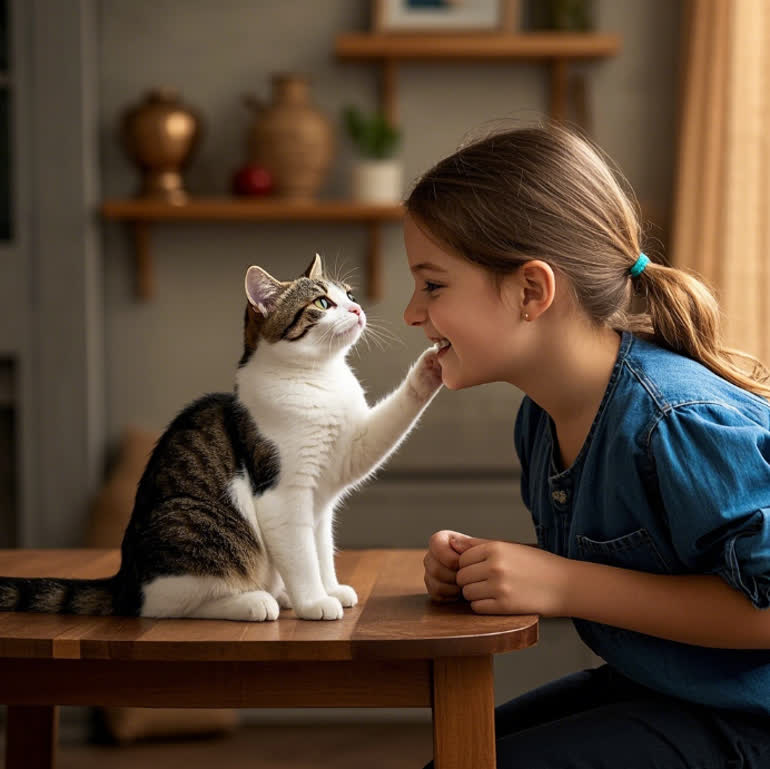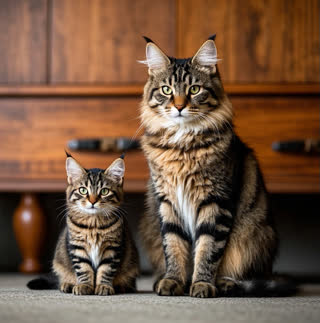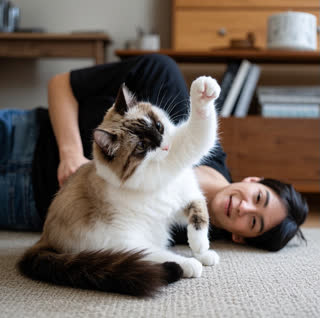Creating a home environment that fosters trust and loyalty with your cat isn’t just about treats and toys—it’s about implementing veterinarian approved cat care strategies that align with feline behavior and biology. By designing intentional spaces and using science-backed techniques, you can build a bond that transforms your cat from a cautious roommate into a devoted companion. Let’s explore how to establish cat bonding spots and use trust-building petting methods that veterinarians and behaviorists recommend.
Understanding the Science of Feline Trust
Cats are highly sensitive creatures, and their loyalty is earned through consistency, safety, and positive reinforcement. According to the AVMA (American Veterinary Medical Association), cats form secure attachments when they feel physically and emotionally safe. This means avoiding stressful interactions and focusing on science-backed cat affection methods that mimic their natural social behaviors. For example, gentle cheek rubs (a feline greeting) and slow blinking (a sign of relaxation) are instinctual ways to signal trust.
Veterinarians emphasize that trust-building begins with recognizing your cat’s body language. Signs of comfort include relaxed ears, a gently swaying tail, and purring. Discomfort, on the other hand, might manifest as flattened ears, a tense body, or sudden avoidance. By respecting these cues, you create a foundation of mutual respect.
Vet-Approved Zones for Bonding
1. Safe Havens: The Importance of Vertical Spaces
Cats are natural climbers, and vertical spaces like cat trees or wall shelves provide them with a sense of control and security. Veterinary clinics often incorporate these into their designs, such as the Anderson Veterinary Clinic’s wall steps that let cats perch near windows to watch birds. These cat trust-building hotspots allow your cat to observe their environment without feeling vulnerable, reducing stress and encouraging interaction.
Pro Tip: Place scratching posts near these areas to satisfy their need to mark territory and stretch, reinforcing positive associations.
2. Interactive Play Zones
Play is a vital part of veterinarian approved cat care, as it mimics hunting instincts and releases pent-up energy. Designate a space with puzzle feeders, feather wands, and laser pointers to engage your cat in interactive games. The Antioch Veterinary Hospital’s adoption center, which includes toys and tunnels, shows how structured play can boost confidence and sociability.
For timid cats, start with short, low-pressure sessions. Gradually increase playtime as your cat becomes more comfortable.
3. Cozy Retreats for Quiet Bonding
Cats also crave quiet moments of connection. Create a cat bonding spot with soft blankets, a heated pad, or a sunny windowsill where your cat can relax. Use non-threatening petting techniques like slow strokes along the head, cheeks, and chin—areas rich in scent glands that cats associate with safety. Avoid the belly and tail unless your cat explicitly signals enjoyment.
A study in the Journal of Feline Medicine and Surgery found that consistent, gentle petting in preferred areas increases oxytocin levels in cats, fostering trust and attachment.
Trust-Building Petting: Techniques That Work
1. The “Cat Massage” Approach
Veterinarians often recommend massaging pressure points to calm anxious cats. Focus on the base of the ears, the bridge of the nose, and the area between the shoulder blades. These science-backed cat affection methods not only relax your cat but also strengthen your bond through physical touch.
2. Reading Body Language
Always let your cat initiate contact. If they nuzzle your hand or rub against your leg, they’re inviting interaction. If they turn away or flick their tail, respect their boundaries. Over time, this builds trust by showing your cat they’re in control.
3. AVMA Recommended Bonding Practices
The AVMA suggests pairing petting with positive reinforcement, such as treats or praise. For example, offer a treat after a successful petting session to associate your touch with pleasure. This classical conditioning helps shy cats overcome fear and learn to enjoy human interaction.
Common Mistakes to Avoid
While creating veterinarian approved cat care spaces, steer clear of these pitfalls:
Overcrowding: Avoid forcing interactions or overwhelming your cat with too many toys or people.
Ignoring Stress Signs: Never punish a cat for avoiding petting. Instead, adjust your approach.
Inconsistent Routine: Cats thrive on predictability. Stick to regular feeding, play, and cuddle times.
Final Thoughts: Building a Lifelong Bond
Earning feline loyalty is a journey, not a quick fix. By incorporating veterinarian approved cat care strategies, science-backed cat affection methods, and trust-building petting techniques, you create an environment where your cat feels safe, valued, and loved. Remember, every cat is unique—observe their preferences, adapt your approach, and celebrate small wins. With patience and consistency, you’ll enjoy a bond that lasts a lifetime.
For more expert insights, consult your local veterinarian or refer to resources from the AVMA and leading feline behaviorists.










